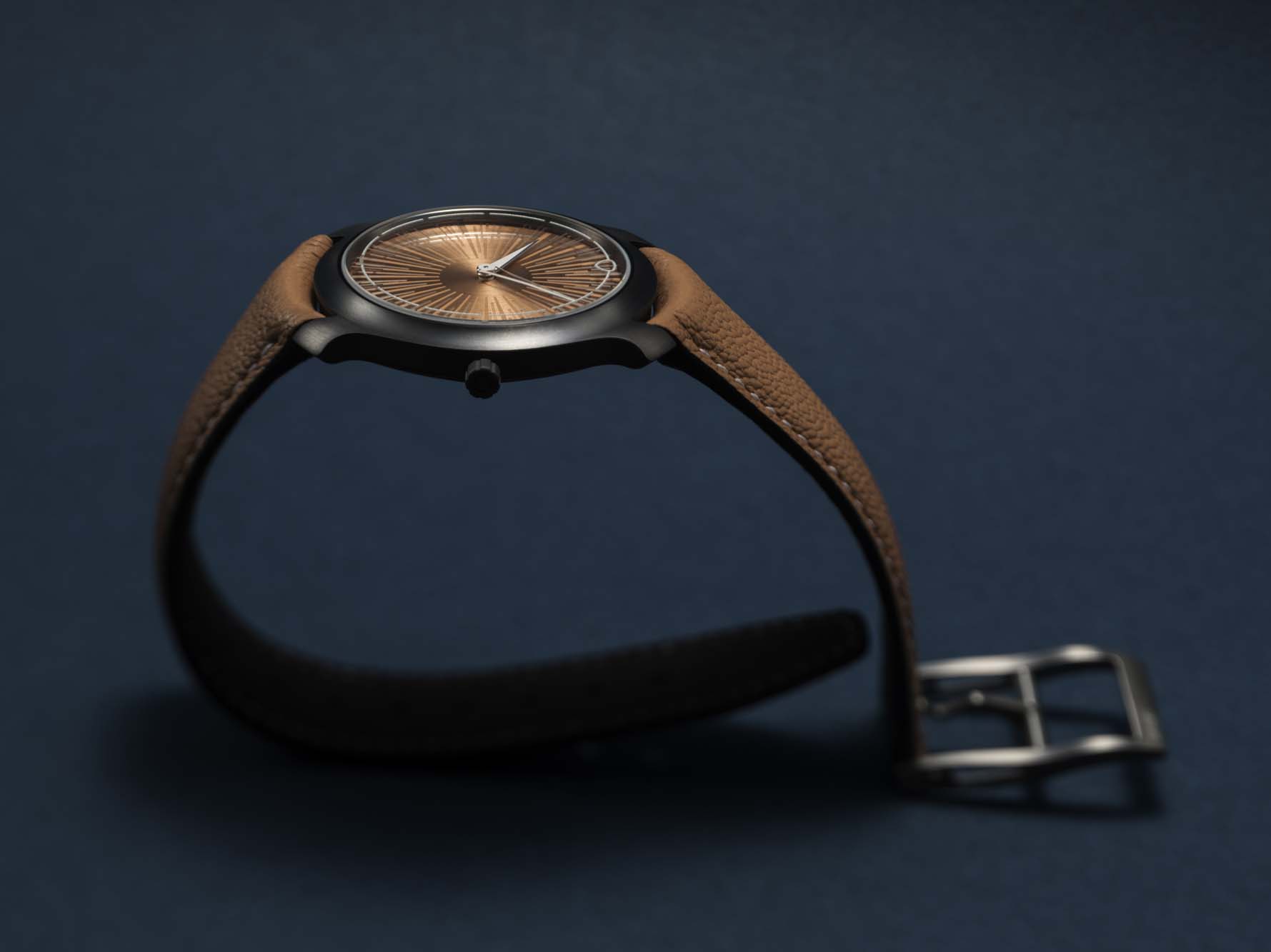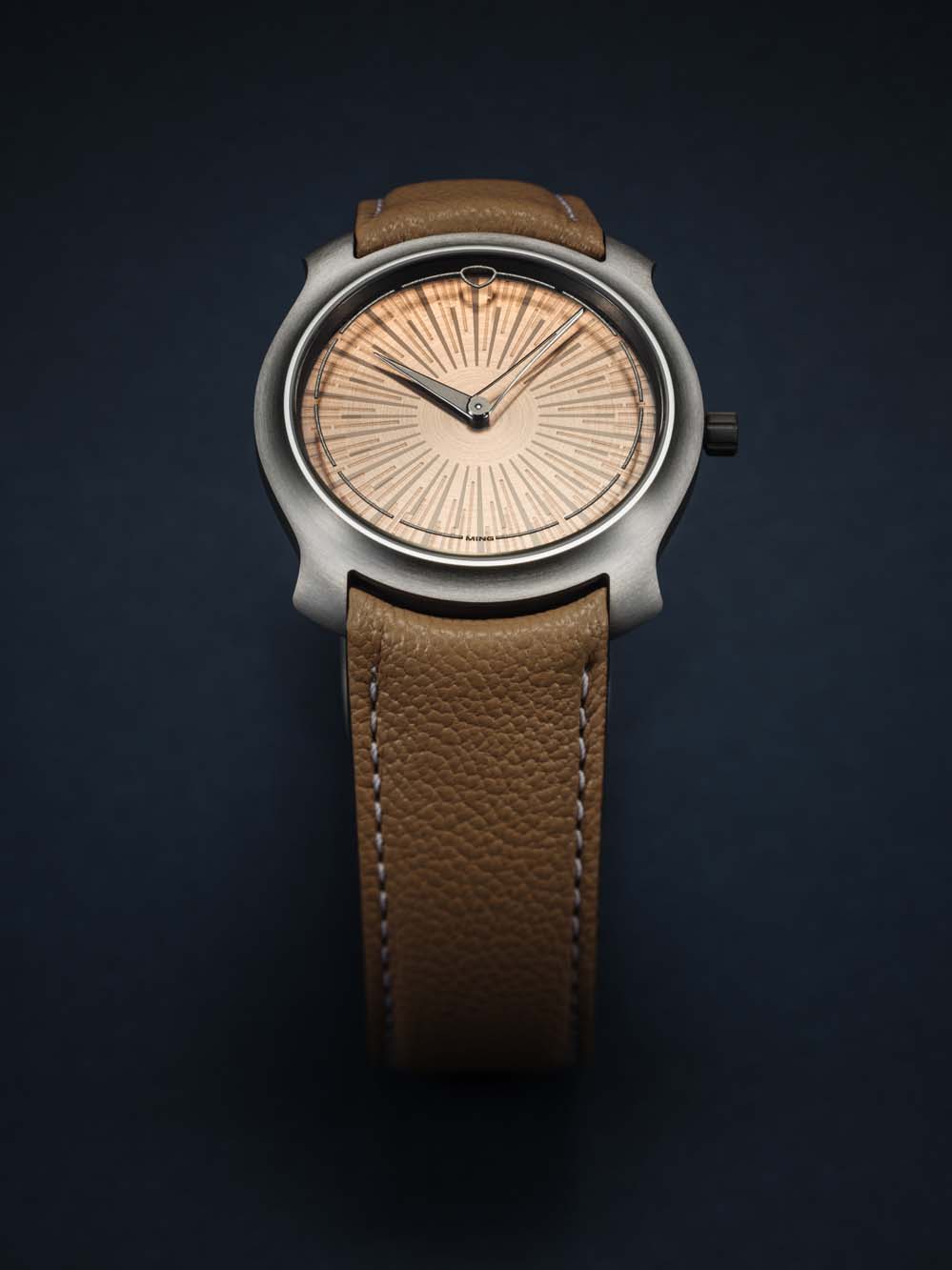If MING Watches isn’t on your radar, I don’t really know what to tell you. The brand, which has been around since 2017 and was founded by photographer and watch enthusiast Ming Thein (his current job title at the brand, at least according to LinkedIn, is ‘Supreme Overlord’), has stood at the forefront of the small independent movement since the day it launched, and has been a tremendous object lesson in the ability and aspiration of small brands.
In the nearly eight years since the brand launched, they’ve made a lot of very cool watches, and possibly cooler than the watches themselves has been the diversity of their offering — diversity in style, functionality, and (notably) price. Now, MING has released its latest marvel, the MING 21.01 ‘Project 21,’ a dream watch for Ming himself and a clear summation of what the brand has been and done up to this point while offering a glimpse into the eponymous founder’s head and maybe even offering some clues as to what will come next for the brand.
So what is the Project 21? Well, put simply, it’s a 35mm tantalum-cased dress watch built around a historically significant ultra-thin movement. Factor in a little more nuance, and it’s exceedingly clear that the Project 21 is an experiment in pushing the brand to its limits, just to see where those limits happen to be. The new watch, which will only be available in extraordinarily limited quantities, was inspired by a challenge thrown down at a 2023 collector’s dinner in Singapore: ‘What would a MING designed entirely without constraint look like?’ (And it’s natural follow-up: ‘Can we buy it first?’)
The result is, as I said, a small, ultra-thin dress watch. At 35mm across and just 6.9mm thick, the MING 21.01 is an exercise in contradiction — and a wildly successful one at that. Built from the ground up around a vintage Frederic Piguet 21 movement, the 21.01 defies expectations for a watch this size, using a tantalum case to give it a modern heft despite its old-school sizing. The case itself is also wildly complex, with every surface curved and sculpted. The end result is something that seems like a straightforward execution of MING’s existing design language, but is, in reality, anything but.
“It [Project 21] wouldn’t be a MING if we didn’t push for more,” Ming writes in the press materials for the new watch. “Small cases tend to be light, and unless ultralight to the point of cognitive dissonance – also tend to feel a little hollow. So I designed a case that would be as heavy as possible: solid all the way around the movement and no separate bezel for even higher perceived rigidity. I wanted it machined in dense, exotic tantalum, have three contrasting finishes – mirror polish on the rehaut edge, fine circular brush on the concave bezel that flows into the lug tops, and sandblasted around the flanks that flow continuously into the bottom.”
But lest you think the cases got all the attention, don’t worry. Typically, complex and intricate dials are a sacrificial lamb in the pursuit of ultra-thin watchmaking, with the space needed for complex dial furniture and other aesthetic flourishes needed instead for the technical side of things. But these are MINGs, and the 21.01 has managed to maintain what has become a signature of the brand; multi-layered dials.
The dial of the Project 21 exists in three planes (four if you count the hands, which are a skeletonized take on MING’s signature luminous handset). The first of these is an exceedingly thin (400 microns, if you have any context for that number — I don’t) CVD-coated and milled brass plate. Above that is a fused borosilicate dial with a “multi-layered pattern of strakes.” Finally, and above all of this, float the watch’s indices, which are etched into the back side of the crystal.
The 21.01 is available — or rather, has been produced — in two variants. The first of these, which pairs a handsome blue dial with the tantalum case, is a 10-piece souscription release, and each of these watches has already been accounted for and delivered. The second of these swaps the blue color for a 5N rose gold dial, and matching movement finishing, and 15 pieces will be available through MING’s web and retail presence for CHF 32,500, making this more of a thought exercise for most of us, though a very cool one at that.
In anticipation of the release of the 21.01 Project 21, I had the opportunity to ask Ming Thein about his new project and, as one would expect, I was not left disappointed, I came away with a far better sense of this watch, what it means for MING, and what we can expect from a brand that has really earned all our attention.
Though there has been a clear evolution of design language and form over the seven years or so that MING has been around, there’s yet to be a MING watch that doesn’t look and feel like a MING, and that remains true with the Project 21. What does it mean to you that in really taking the brakes off with this new watch, you’ve still arrived at something as quintessentially ‘MING’? That is to say, something that, while clearly a technical world apart from the 17.01, is a watch that still clearly comes from the same brand and voice.
Isn’t that the whole point of establishing a style, an identity, a design language? If you put something like the 17.01, 29.01, and 20.01 S3 next to each other, it’s clear they’re not the same beyond being round — what’s shared is a philosophy, not physical features. That philosophy doesn’t change but is instead applied to different design challenges — a diver, a revival of a vintage movement, a modern chronograph. This is intentional and important in creating something that has value because you can instantly identify it as one of ours, with all of the qualities that implies. We’re at a point that you don’t need to see the brand name on the dial to know it’s a MING — I actually hide it as much as I can, and on the P21 it’s nearly illegibly small — how many other brands and designers have the consistency to have accomplished that but not just churn out duplicates? I bet it’s a pretty small list.
Taking the brakes off means that we push the execution of that philosophy to the point where it’s honestly economically unfeasible to do in quantity — we used a movement that’s hard to work with and in short supply and reworked that to be even harder to work with (skeletonized titanium ultra-thin, anybody?) in a case material that’s equally hard to work with, with a construction that’s just as unforgiving — it’s a two-part case with a strange geometry and surfacing that requires both five-axis CNC and hand finishing. And then we have hands that have 0.2mm wide surfaces that are faceted and polished, a dial with much more apparent depth than the case dimensions would suggest because we used everything we know about multilayer dials and optical interactions between different surfaces to create this. It’s the extension of our philosophy to the point where it is almost too much. Reductivism? Check. Pushing boundaries in materials and manufacturing? Check. Aesthetic differentiation? Check. Wearing comfort? Check. Subtle restraint? Check. Visual layering? Check. The only thing we don’t have here is lume, and that’s because there’s no way to put it into those hands and retain the desired overall thinness.
When the MING 17.01 debuted in 2017, it was a clear statement of identity. Likewise, the 27.01 in 2020 felt like a declaration of a new era of MING. Between the LW.01, 37.02, and now the Project 21, we’re seeing MING at a similar inflection point. What do these pieces tell us about where MING is headed in the next few years?
I’ve always said that the numbering system isn’t random. Anything starting with a 1 is first generation, where we are experimenting and finding our voice and feeling comfortable with what can be done from a manufacturing standpoint; anything with a 2 is where we start to get a bit crazy and push the boundaries in a more technical direction — there’s a reason for the multilayered dials, flying blade lugs, bezel-less or interlocking construction, etc. The 3 series watches are a consolidation both stylistically and literally — they’re sculpted monoblocks where the 2 series were light and airy. P21 is very much a 2nd generation / 2 series design that’s technical and airy and visually delicate; it was designed during this era, too.
What we have now is a consolidation of both our philosophical codes and design codes into a tighter core — one that’s always recognizable. From here we start to diverge and experiment again, and you’ll see that the next generation (which will debut this year) is something altogether different again. It starts with a 5 though, because we have a substantial Asian market and 4 is a superstitious no. Given the length of development cycles — I can say that this generation is complete and I’m already working on 6. But the further we go, the harder it becomes and longer it takes to do something new that doesn’t repeat or undermine any of our previous work.
If you were to point to one watch and say “This Is MING,” would the Project 21 be that watch?
At the time I designed it, yes — but this is true of everything we do. At the time of creation, ‘it is MING’ for that type of watch. What that ‘is’ obviously changes as the tech available to us evolves and as my personal tastes evolve as a designer. [Project 21] is perhaps a bit more of my personal taste than most because it wasn’t created with any customer concessions in mind. It wasn’t even initially meant to be more than a design exercise, so there was considerable challenge in figuring out how to actually produce some of it. But at the time the question was posed, it was the one thing I wanted to make the most — even if it had the least chance of actually happening.
To that end, Tantalum is a notoriously challenging material to work with, the same could be said for using a 100-year-old ultra-thin movement, but you’ve laid out several compelling reasons why they were the right choice for this watch. The ethos behind the Project 21 was to push the brand as far as you could within certain broad constraints, was there anything that proved a bridge too far for this model?
Let’s get one thing clear: mechanical watches do not make rational sense at all; they make emotional sense, and through that bias then the more exotic the better. One hundred year old ultra-thin? Definitely. Impossible material to machine and finish? Even better. Non-round case shapes that require multiple tool axes, and a bezel-less construction? Hell yes!
The one thing I would have liked to put in was some luminous element because that’s become part of our signature, but there’s just not enough height in any component to make the pockets required for it. And somehow, it was the right thing to do anyway because, in the end, it fits the personality of the watch better.
And having accomplished what you did with this watch, are the gears now turning for how to push past it?
As I said earlier — we’ll unveil the first product in our next design language later in the year, the entire product lineup for that is basically complete at this point, and work has begun on the sixth generation…so, yes. We’ll definitely keep pushing, as far as our suppliers are willing to go…
More information on the MING website here.








